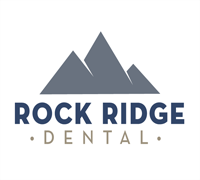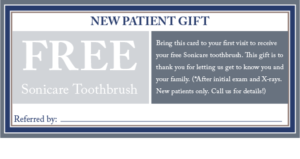If you have a receding gum line, then you know it’s not just unsightly and may even cause you discomfort, but it can lead to much more serious oral health problems down the line. Gum recession means that the gum line surrounding one or more teeth wears away (or recedes) and exposes part of the tooth’s root. Bacteria can build up in the gap between the top of the tooth and the gum line, which exposes the bone and surrounding tissues in the mouth to more damage and decay. It can eventually result in loose teeth, tooth loss, mouth pain and nerve sensitivity. Since your overall gingival health is very much tied to the condition of your gums, it’s very important to discuss problems with your dentist and consider getting treatment early to preempt more and possibly permanent damage.
How to know if you have recessed gums
You won’t wake up one morning and find that your gum line suddenly retreated a few millimeters. It’s a process that often begins in early adulthood and can take several years before it’s noticeable to you or anyone else. Here are the symptoms of a receding gum line:
Exposed Roots
One of the first things you might notice is different about your smile is that you can now see a portion of the root of one or more teeth. Exposed roots can be extremely sensitive, especially when you’re brushing your teeth or undergoing a dental cleaning. But you can also experience discomfort when hot or cold food and liquids brush against the root.
Long Teeth
When the root of the tooth is exposed, the tooth looks longer. This is especially noticeable on both sets of incisors (top and bottom front teeth) and canine teeth.
Loose Teeth
Receded gums expose the structure of your teeth to bacteria, which can lead to periodontal disease beneath the gums in the affected and surrounding teeth. By waiting out the issue to see if your gums stop receding, your teeth can become loose. And yes, losing one or more teeth is a very real prospect if you leave the condition untreated.
Source: https://www.healthline.com/health/teeth-names#diagram
How to treat receding gums
More than 10 years ago, dentist and research professor, Dr. John Chao, invented the Chao Pinhole technique for correcting recessed gums. Because this is a non-invasive treatment, it’s one of the most popular procedures for addressing this long term oral-health threat. The treatment has been tested extensively and according to studies, the results are stable and long lasting.
Here are the biggest advantages of the Pinhole technique:
- It’s minimally invasive
- No flap, incisions or sutures
- Patients see results immediately
- No post-procedure periodontal dressing required to protect the gums or site of the needle prick
- Patients can resume normal activities right away
- Mostly pain-free — typically, patients experience only mild discomfort and swelling for just one or two days
How the Pinhole Technique Works
At the start of the procedure, your dentist will numb your gums and then use a needle to make a small hole in the tissue. Using specially designed instruments, the dentist will loosen and expand the tissues so the gums go back to covering the root structure.
Unlike past corrective procedures for gum recession, no graft tissue is required from the patient or a separate donor, there’s no incision, no sutures, and no need to apply protective dressings on the gums post-surgery. Recovery from the Pinhole technique is also shorter than other surgical procedures.
According to Dr. Chao, this treatment is permanent. The one caveat is that the aging process is different for everyone, and therefore, no one can predict the future of one’s oral health. That’s why he suggests that patients continue caring for their teeth and gums correctly — as in not over-brushing — and seeing their dentist regularly so they can address dental health problems early.
Who qualifies for this procedure
The good news about the Chao Pinhole procedure is that anyone can discuss this treatment plan with his or her dentist. As long as your oral health is in relatively good standing, you qualify for this treatment, which is a proven way to prevent further decay from affecting your teeth and roots. It also helps ensures that you don’t experience premature tooth loss.
The last thing you really need to consider before signing up for treatment of your recessed gums is whether you will be happy with the results. Fortunately, you don’t have to read reviews online (people tend to pay more attention to negative experiences!). According to a 2017 study, researchers reported that about 95 percent of patients are happy after undergoing this procedure and called it a “high amount of patient satisfaction.” Those are some pretty reliable numbers.


